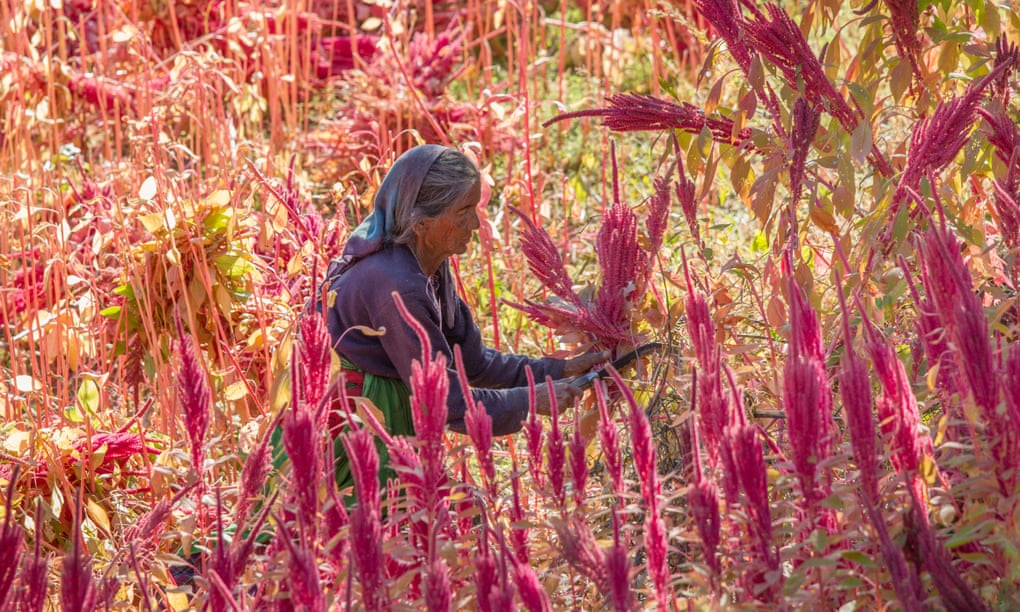by CECILIA NOWELL

Indigenous women in North and Central America are coming together to share ancestral knowledge of amaranth, a plant booming in popularity as a health food.
Just over 10 years ago, a small group of Indigenous Guatemalan farmers visited Beata Tsosie-Peña’s stucco home in northern New Mexico. In the arid heat, the visitors, mostly Maya Achì women from the forested Guatemalan town of Rabinal, showed Tsosie-Peña how to plant the offering they had brought with them: amaranth seeds.
Back then, Tsosie-Peña had just recently come interested in environmental justice amid frustration at the ecological challenges facing her native Santa Clara Pueblo – an Indigenous North American community just outside the New Mexico town of Española, which is downwind from the nuclear facilities that built the atomic bomb. Tsosie-Peña had begun studying permaculture and other Indigenous agricultural techniques. Today, she coordinates the environmental health and justice program at Tewa Women United, where she maintains a hillside public garden that’s home to the descendants of those first amaranth seeds she was given more than a decade ago.
Maria Aurelia Xitumu of the Qachuu Aloom community
The Guardian for more
